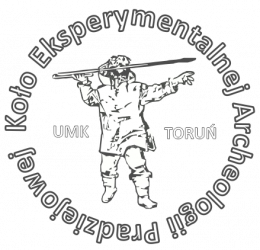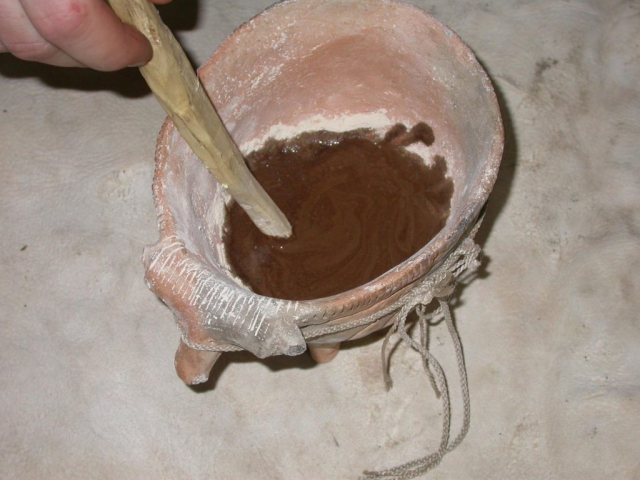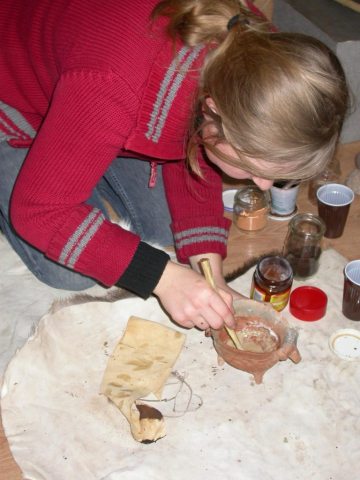One of the most interesting and spectacular elements of the primeval art are paintings found on walls of some of European caves. The creators of these, often complex and stimulating the imagination, works using simple dyes acquired from materials available around. Chemical analysis of samples of particular colors showed that mainly mineral materials were used in dye production, most of all: hematite, manganese and charcoal. The substance bonding a dye was produced from (among others): water, blood, protein, marrow, bird guano, isinglass (glue made from boiled parts of fish bladders) and urine. Dye were applied with brushes made of animal hair, fingers, tampons, sticks.
Experiments with dyes performed by the members of the Society for Experimental Prehistoric Archaeology concern both the methods of obtaining particular colors, and methods of their preservation and suitability for dying various types of organic and inorganic surfaces. Particular colors are obtained from specific materials, e.g. black from charcoal or soot, red form hematite, white from limestone etc. However, conducted are also experiments worth other substances that may help to obtain the desired colors. Mixing a dye with a perseverant, one obtains paint, which is then applied to specific surfaces. Durability of a dye depends on the surface on which it is applied. Different is its perseverance on ceramics, different on stone or wood.
In carrying out experiments with dyes one should take into account climate conditions since each environment differently influences on a dye’s perseverance. Humid environment may cause rapid dissolving of paint or, alternatively, preserve it permanently. It all depends on the type of material used in dye production and the perseverant. The most durable seem to be dyes of mineral origin such as those found in primeval paintings in caves or caverns. However, plant dyes are preserved to a much lesser extent. Observed was a very rapid degradation of pigments made of, e.g., grass, flowers or bark. Moreover, the color obtained from these materials was often of small intensity and faintly visible on the surfaces. Also, the type of perseverant determined the intensity of a dye and its durability. The best adhesion to surface has been found in the case of heated bone marrow that, while protein underwent rapid crushing (after application on leather) or degradation (remaining surfaces).
Currently, the members of the Society for Experimental Prehistoric Archaeology are carrying out an experiment the aim of which is the investigation of influence of different “environments” and climate conditions on the durability of particular dyes and perseverants.
Joanna Cywińska













